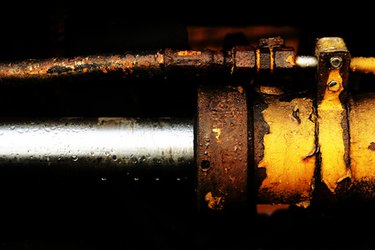
Hydraulic pumps are mechanical devices designed to move fluids in hydraulic systems. Hydraulic pumps can be hydrodynamic or they can be hydrostatic.
Definition
Video of the Day
Hydrostatic pumps are pumps used in hydraulic systems that work via positive displacement. Positive displacement involves the process of trapping of a fluid and then displacing, or forcing, it through a controlled channel.
Video of the Day
Cavities
Hydrostatic pumps are composed of two cavities: a shrinking cavity on the fluid discharge side of the pump and an increasing, or expanding, cavity on the suction side. Fluid enters the pump as the suction side cavity expands, and exits out of the discharge side of the pump as the discharge cavity shrinks or collapses.
Open/Closed Systems
The majority of hydrostatic pumps operate in open systems and draw oil in at atmospheric pressure from a reservoir. The suction end of the pump uses a larger connection than the discharge end to prevent the cavity on the suction side from collapsing. In a closed system, both ends of a hydrostatic pump can possess equalized pressure.